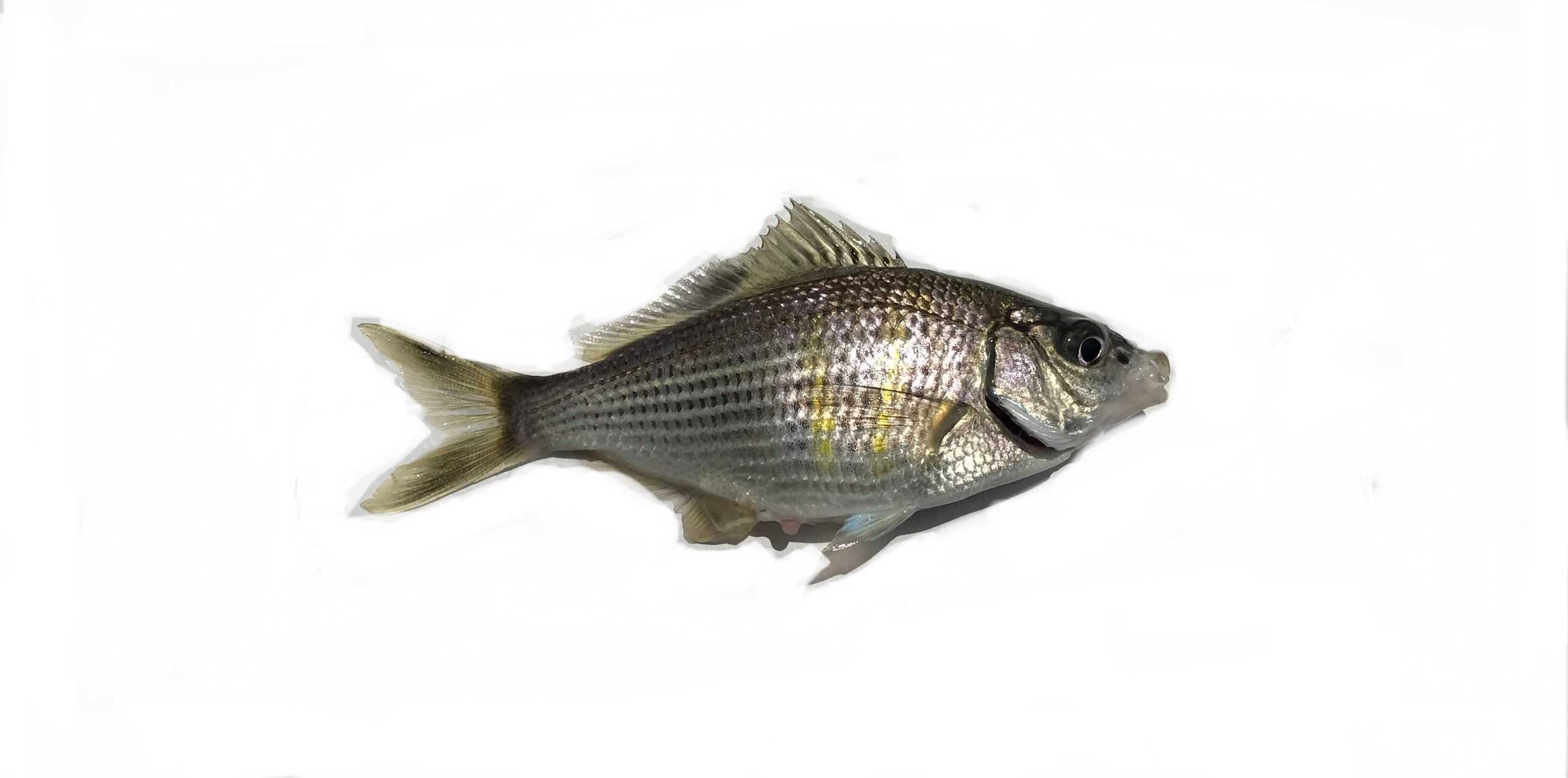Shiner Perch

Species Details
Cymatogaster Aggregata
Embiotocidae
Perciformes
Inshore
1 - 3 lbs.
5" - 8"
Shiner Perch (Cymatogaster aggregata) Fish Description
The Shiner Perch, also known as the 7-11 perch, leven perch, yellow perch, bay perch, and the yellow shiner, is a surfperch commonly found in estuaries, lagoons, and coastal streams from Alaska to Baja California on the Pacific coast. It is the only member of its genus.
They have grey to greenish on the upper side of its body and a silvery underside. To distinguish a Shiner perch fish’s gender, you need only look at their sides. Female Shiner perch have three yellow bars, and males would typically have only two during the winter. The males' colors shift during their breeding season, as they would be nearly black.
Diet and Size
Shiner perch fish’s diet commonly consists of small crustaceans, mollusks, worms, small shrimp-like animals, and fish eggs. Their species can be often found around pilings, nibbling at the tentacles of barnacles.
Shiner perch can grow in lengths up to 8 in., but averagely are around 4 to 6 in.
Female Shiner perch are known to grow faster and be larger than their male counterparts.
Interesting Facts
- Shiner surfperch can live in either saltwater or fresh/brackish waters found in coastal wetlands.
- As Shiner perches are one of the most numerous fish taken at California piers and bays, they are the number one fish caught along the California coast by young fishers.
Shiner Perch - Fishing Techniques
Shiner perch are most commonly by-catch when trying to fish for larger game fish, to the point where most anglers would find keeping these fish off their hooks, rather than on, to be their main problem.
However, some anglers may want to catch Shiner perch, as they are good fun for beginner fishing or as good live bait for bigger targets, such as striped bass or halibut.
It is best to use a small hook, (around a size 8 or smaller), bait it with pieces of worm, and fish from the top or mid-level depth of water. If your area has Shiner perch fish, you’ll be sure to catch them.
Habitat and Distribution
Shiner perch fish frequently inhabit shallow waters and are commonly sighted in bays with eelgrass beds, oil platforms, or pilings of wharves and piers, and sometimes backwaters. They can adapt to brackish and freshwaters. Usually, occupy depths from the surf zone to 50ft, and can go as deep as 200 ft.
They can be found in ranges from Bahia San Quintin, Baja California to Sitka, southeastern Alaska.







